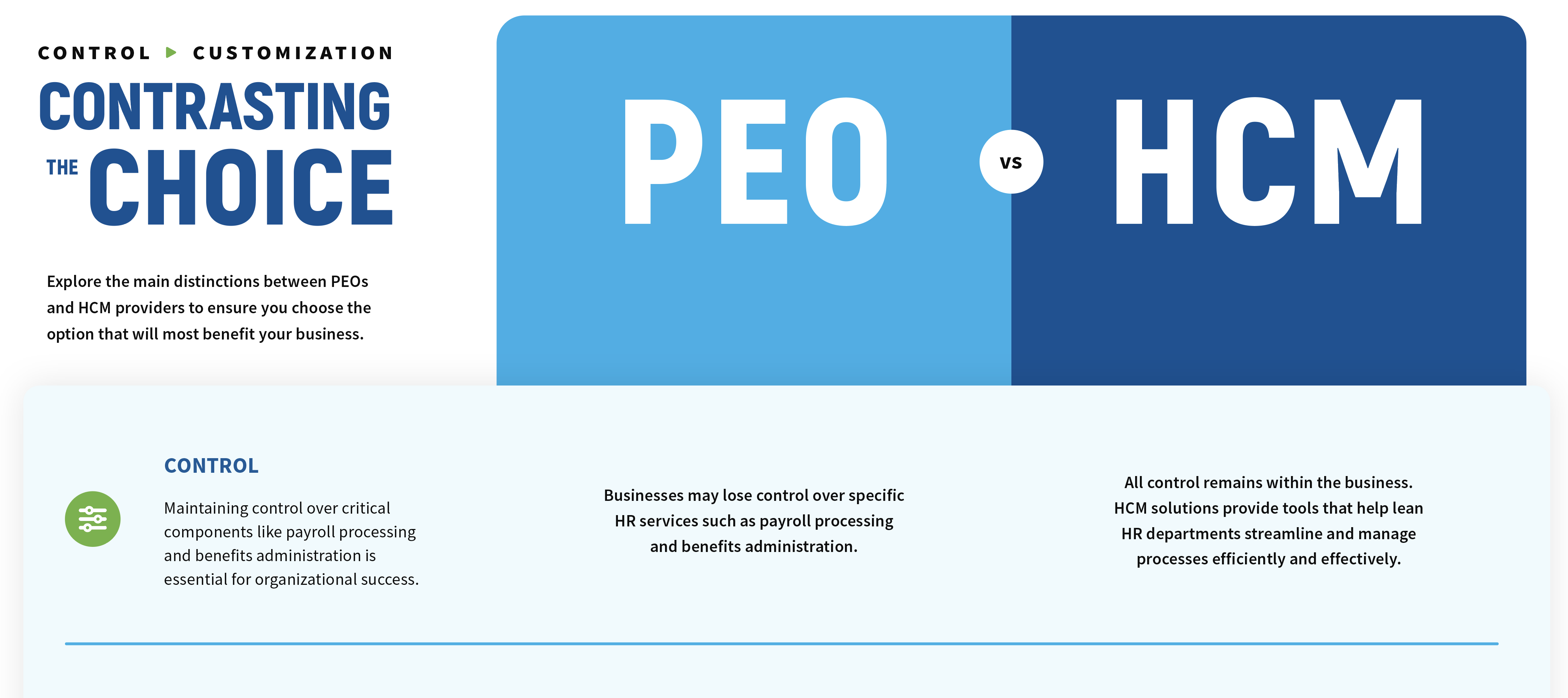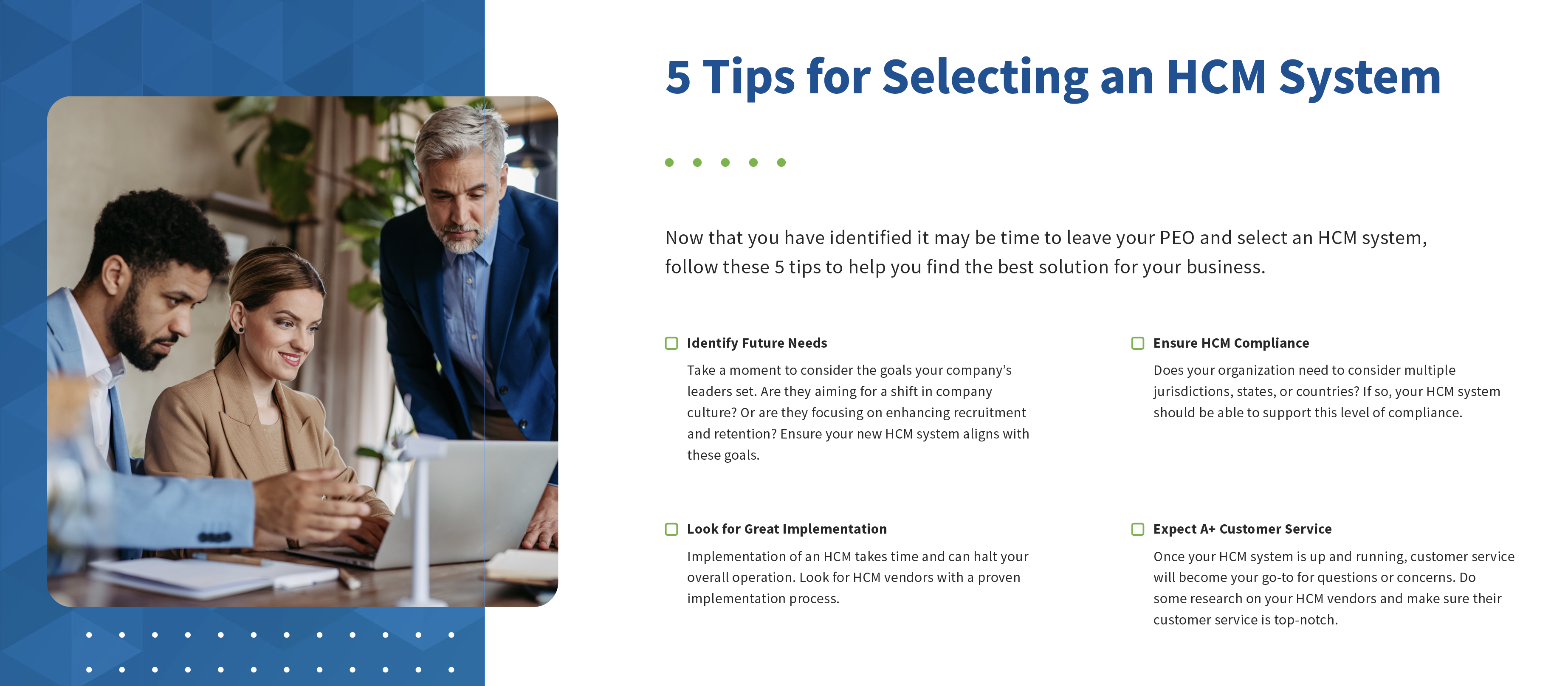Reasons Companies Choose an HCM Solution
Companies choose HCM providers for their ability to deliver tailored HR solutions, industry expertise, advanced technology integration, and a focus on scalability and flexibility. These factors collectively contribute to a streamlined and practical approach to HCM, empowering businesses to thrive in a competitive environment. Here's a more in-depth look at the compelling reasons why companies opt for an HCM provider:
Tailored HR Solutions
HCM providers offer customizable solutions to address specific HR requirements based on industry, size, and business goals. Tailored solutions allow businesses to adapt and scale their HR processes effectively.
Industry-Specific Expertise
HCM providers often specialize in serving particular industries, bringing in-depth knowledge and understanding of sector-specific HR challenges. Industry expertise ensures compliance with regulations and best practices relevant to the business.
Focused HR and Payroll Services
Companies seeking specialized HR and payroll services use HCM providers for their expertise. Dedicated services enhance accuracy and efficiency in managing payroll, time and attendance, and related functions.
Access to Benefits
PEOs leverage collective bargaining power to provide access to employee benefits at lower costs and offer a wide range of benefits, including health insurance, retirement plans, and more.

Advanced Technology Integration
HCM providers offer advanced technology solutions, including cloud-based HRIS platforms and integrated software suites. Cutting-edge technology streamlines HR processes, improves data accuracy, and enhances efficiency.
Scalability and Flexibility
HCM providers design their solutions to be scalable, accommodating businesses' growth and changing needs. Flexible service models allow companies to choose and adapt HR services based on their evolving requirements.
Focus on HR Analytics and Reporting
HCM providers emphasize analytics and reporting features, providing businesses with valuable insights into workforce trends. Data-driven decision-making enables strategic planning and enhances overall HR management.
Integration with Existing Systems
Businesses with established systems prefer HCM providers that offer seamless integration with existing technology infrastructure. Integration ensures a smooth transition and cohesiveness in HR and business operations.
Regulatory Compliance Solutions
HCM providers offer robust compliance solutions, helping businesses navigate the complexities of ever-changing employment laws. Proactive compliance measures reduce legal risks and ensure adherence to industry regulations.
Employee Engagement and Development
HCM providers focus on fostering employee engagement and development through training, performance management, and feedback systems. Strategies to enhance the employee experience contribute to higher retention and satisfaction rates.
HR Support
Companies with a global footprint choose HCM providers with capabilities for managing HR processes on an international scale. Global HR support ensures consistency in HR practices across different regions.








